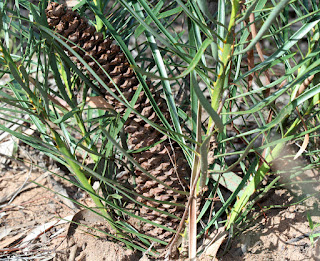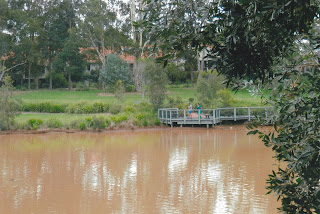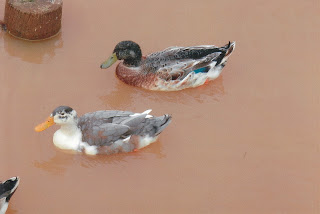I recently had the pleasure of leading the Toowoomba Field Nats on their July outing, part of which took us into Bringalily State Forest near Inglewood in south-east Queensland. One of the objectives of the day was to show attendees a rare and threatened plant that is only known from a single site in this state forest. This plant is the small prostrate Commersonia inglewoodensis (Family Byttneriaceae) that is regarded as an endangered species under state and federal legislation. Whilst the day’s activities will be competently reported upon in the trip report this plant did attract quite a bit of interest so I thought that I might submit a few more detailed notes for the reader’s information.
This plant has no common name but was described by the Director of the Queensland Herbarium Dr. Gordon Guymer in 2006. The description is from specimens taken from along Andersons Road and its verges in Bringalily State Forest. The plant is growing on a deeply weathered duricrust and in shallow red sandy loam with pea gravel in an area where the road transects low heathland and shrubland communities. An old abandoned quarry abuts the road here. The adjacent shrubland is dominated by Calytrix sp., Micromyrtus sessilis, Babingtonia densifolia and Boronia. In 2011 C.F.Wilkins and B.A.Whitlock erected a new genus for 22 species of plant previously described as Commersonia, four species formerly described as Rulingia and seven new species in the genus Androcalva. This included the plant under discussion; however a recent enquiry to the Queensland Herbarium revealed that this institution does not accept Androcalva and are staying with Commersonia for these plants.
Commersonia inglewoodensis is a ground-hugging and spreading shrub to 100mm in height with trailing stems to about 90mm long. The branchlets are covered in fine hairs. The leaves are dark green on the dorsal side, broadly ovate to ovate to 20mm long by 19mm wide. The upper side of the leaf has impressed veins and a sparse covering of fine hairs. The underside of the leaf is paler with a dense cover of hairs and raised veins. The leaves are irregularly serrated and the leaf-stalks are hairy to 7mm long.
Commersonia inglewoodensis has been recorded flowering in February, March, October and November. The small creamy white flowers are about 3mm in diameter and occur in groups of three on stalks to 1mm long. The seed capsules are globular, 6.5-8mm in diameter.
References:
Guymer, G.P. (2006). New species of Commersonia J.R.Fortst. & G.Forst. (Sterculiaceae) from Queensland, Austrobaileya, -ol. 7(2): 369-71.
Wilkins, C.F. & Whitlock, B.A. (2011). A new Australian genus, Androcalva, separated from Commersonia (Malvaceae s.l. or Byttneriaceae). Australian Systematic Botany, vol. 24(5):284-349.
Report by Rod Hobson 08/07/15
(Both photos below by Bruce Thomson)
(Both photos below by Bruce Thomson)
 |
| Commersonia inglewoodensis habit |
 |
| Commersonia inglewoodensis leaves and flower |
















